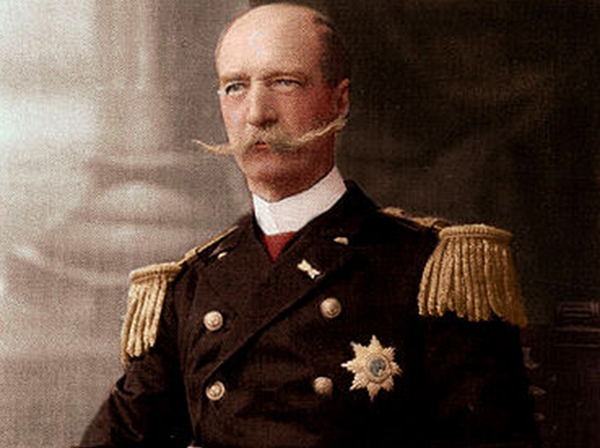The marriage of King George I of Greece, the former Prince William of Denmark, to Grand Duchess Olga of Russia began a new royal dynasty in Greece that lasted a century.
King George I and Queen Olga of Greece began the Schleswig-Holstein-Sonderburg-Glucksburg dynasty in Greece, a dynasty that lasted over a hundred years. They had a happy, successful marriage that served their family and Greece very well, and their legacy lives on in their many royal descendants throughout Europe.
King George I of Greece Looks for a Wife
When the young Prince William of Denmark (1845–1913) was elected king of Greece, he knew that he needed a very special wife to support him and help him found a new royal dynasty. It was important for him to marry quickly in order to give Greece a royal family and stabilize the throne. He also had said that he wanted to marry young in order to avoid temptation. And although he himself never converted to the Orthodox Church, he knew that he needed to give Greece an Orthodox queen, not just because it would be a popular choice but also because he needed to raise his children in the Greek Orthodox Church. Therefore, he looked to Russia for a bride.
Grand Duchess Olga Constantinovna of Russia
King George I’s favorite sister Princess Dagmar was married to the future Tsar Alexander III, and she gladly helped her brother find a suitable bride amongst her husband’s family. George decided on Tsar Alexander II’s young niece, Grand Duchess Olga Constantinovna of Russia (1851–1926).
Grand Duchess Olga Constantinovna was very young, but she was sensible, warm, and energetic, and King George I rightly believed that she would make a good wife and queen. Olga’s father, Grand Duke Constantin Nikolaievich, was against the match at first, but Dagmar finally persuaded him to agree. The smitten couple was married in October 1867 in the Winter Palace in St. Petersburg.
The Married Life of King George I and Queen Olga of Greece
King George I and Queen Olga of Greece were very well suited to each other. They also worked well together, with Queen Olga sometimes acting as regent for her husband when he was out of the country.
King George had grown up with a very simple, unpretentious home life, one that he recreated in his royal court to the delight of his Greek subjects. Queen Olga also preferred a warm, informal home life, and the Greek royal family was soon known as the most familiar, easygoing royal family in Europe. The couple enjoyed having fun with their children and didn’t enforce rigid etiquette, but made sure that their seven children were well educated.
Both King George I and Queen Olga were concerned with restoring the classic grandeur of Greece. They even named their eldest son and heir Constantine after the last Byzantine emperor. The king and queen also hoped that their family connections would help Greece. For example, when Greece lost a war with Turkey in 1897, the intervention of some of their powerful relatives, particularly the Russians, helped the terms of surrender not to be too harsh.
The Legacy of King George I and Queen Olga of Greece
King George I’s comfort and familiarity with his subjects lasted until his death, when he was assassinated while walking through the streets of Salonika. His family mourned him, particularly his widow who spent the rest of her life suffering through political instability in Greece and Russia. King George I and Queen Olga of Greece established a new dynasty in Greece that lasted over a hundred years until the monarchy was deposed in 1973. Their descendants also married into other royal families, so the legacy of their marriage lives on throughout Europe.
Sources:
- Aronson, Theo. A Family of Kings: The Descendants of Christian IX of Denmark. Cassel & Company Ltd., 1976.
- Beeche, Arturo. The Grand Duchesses: Daughters and Granddaughters of Russia’s Tsars. Oakland, CA: Eurohistory.com, 2004.
- Kiste, John van der. Northern Crowns: The Kings of Modern Scandinavia. Gloucestershire: Sutton Publishing, 1996.





